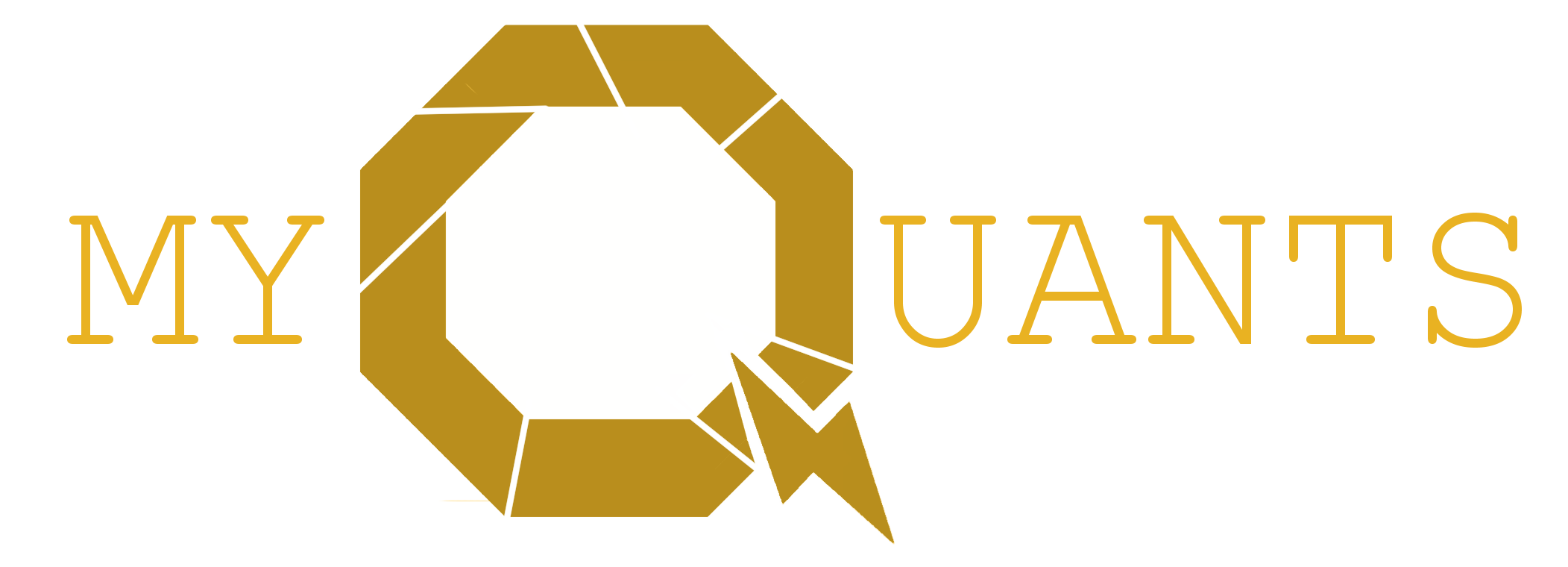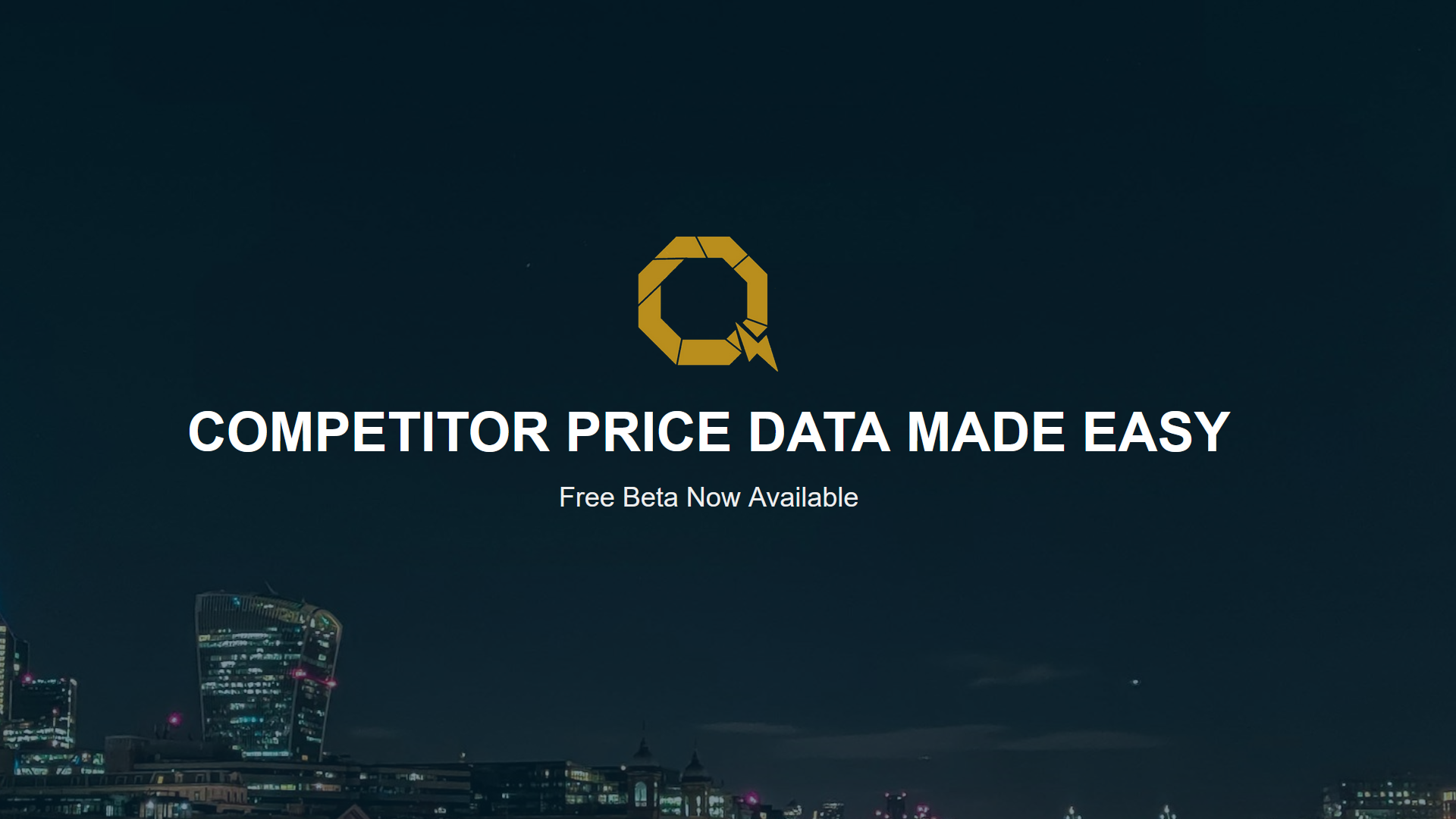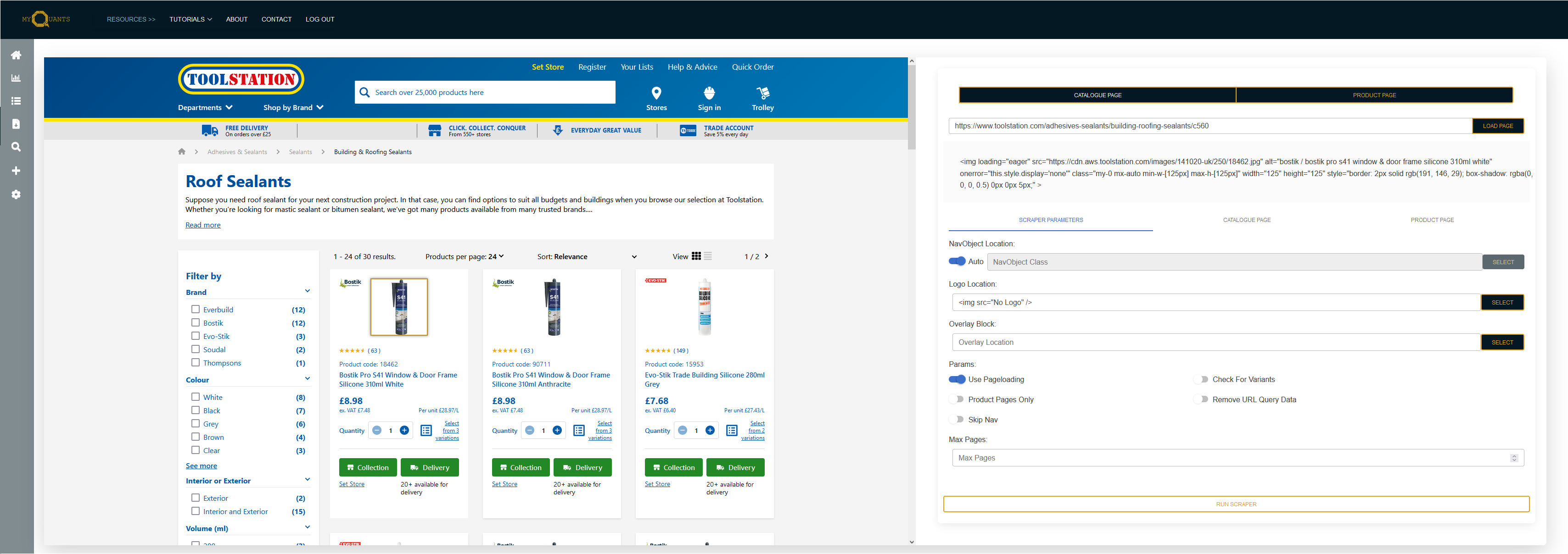
MyQuants Scraper
Introduction
MyQuants Scraper is a no-code webscraper designed specifically for product and price tracking. It allows you to choose the competitor products you want to track without the need for code, or even workflows. Giving you the freedom to analyse, rather than code.
1. Requiring a new competitor
You've added a product, now you want to discover the market. You've found your local competitor has a website and sells the same products you do, so you want to start tracking to ensure you are as competetive as possible.
You have a choice, you can either track a single product, or you can track a page of the catalogue.
Start off by clicking "Add Competitor" on the MyQuants Sidebar.
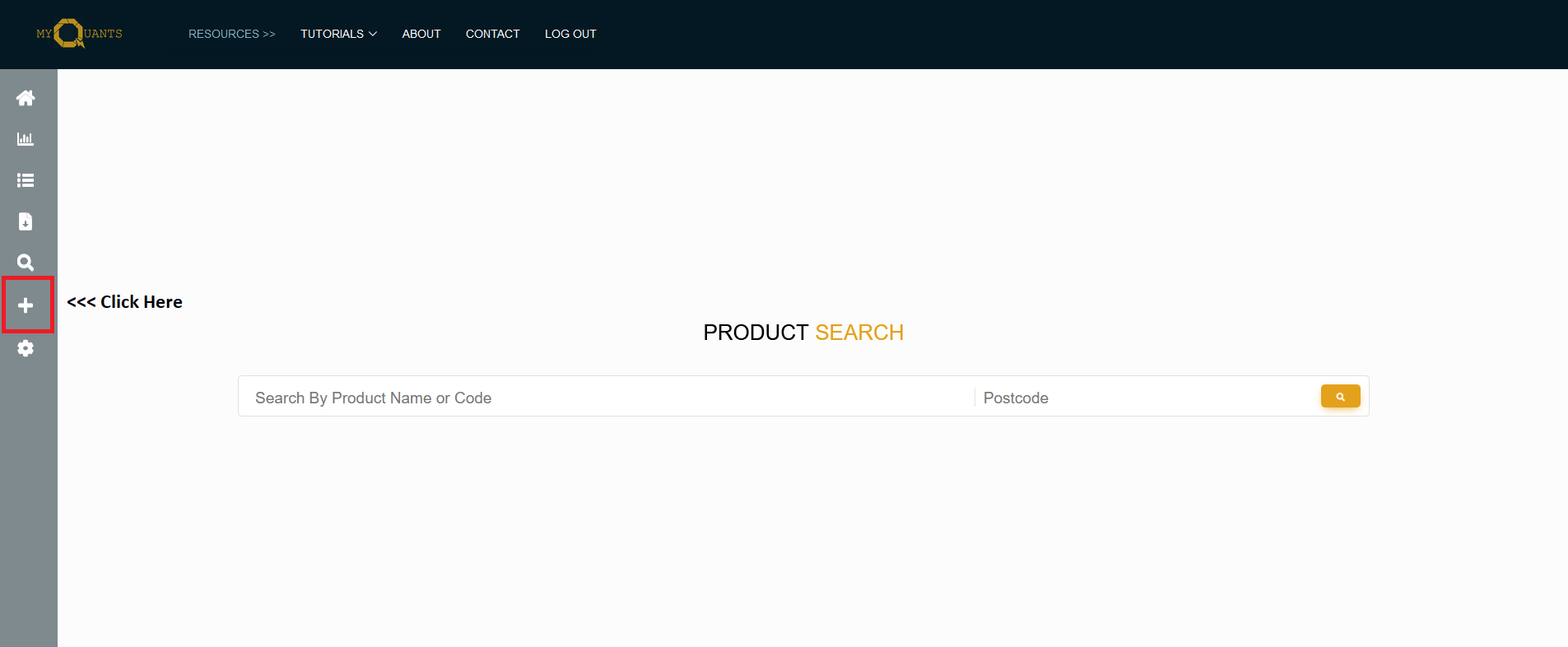
Adding a Catalogue Page
If you want to track multiple products from your competitors' catalogue, you can do so by selecting "CATALOGUE" within the MyQuants scraper.
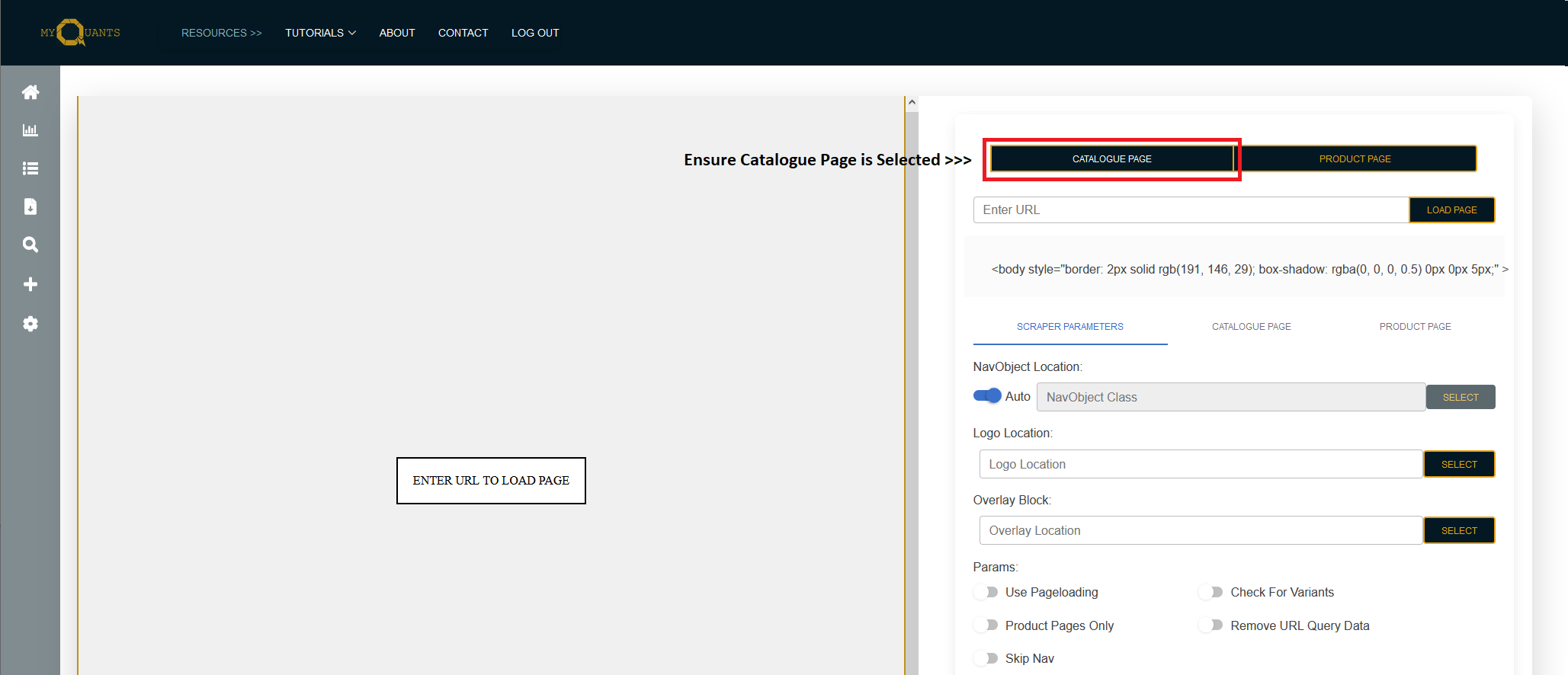
Once clicked, you can then proceed to paste the URL of the catalogue page you wish to track.
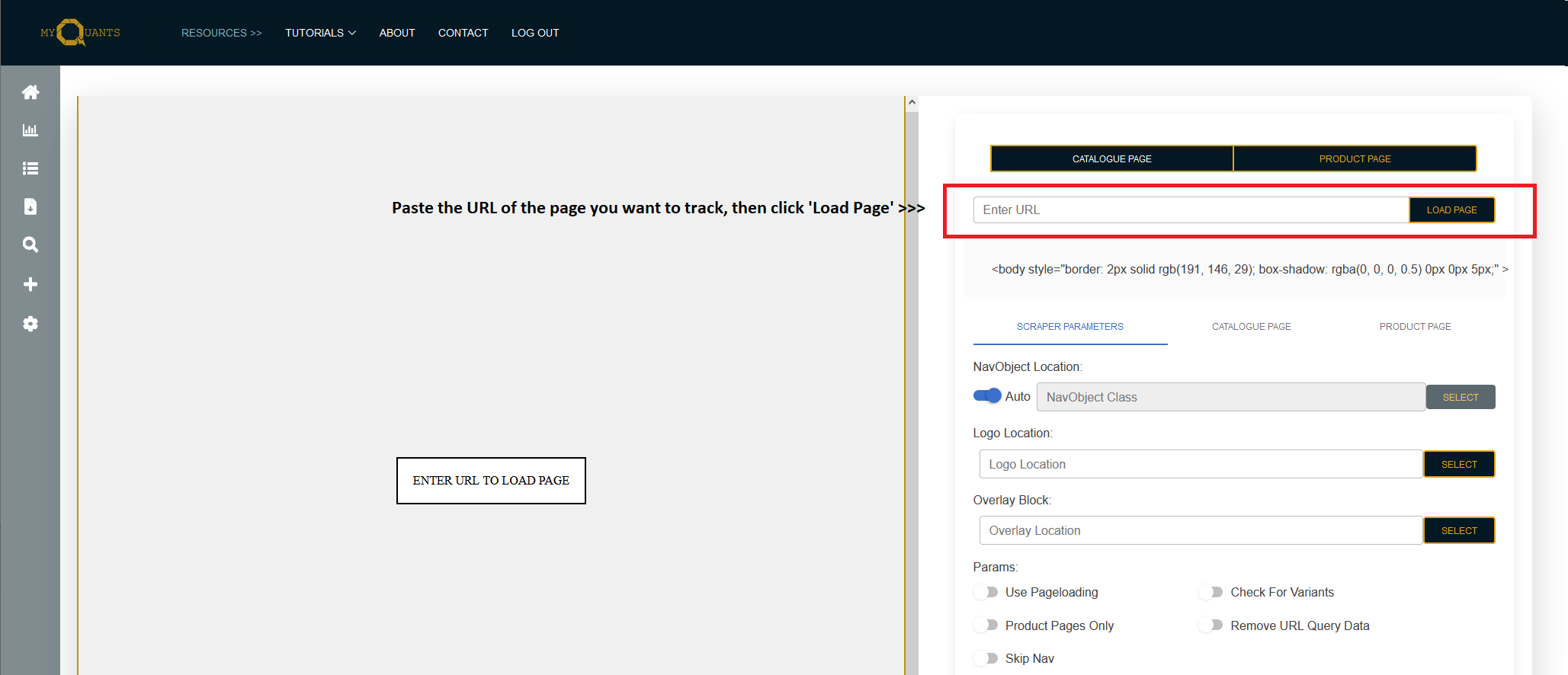
If the page has loaded, you will be able to see a preview of the page you wish to track, from here, simply click RUN SCRAPER and let MyQuants pull the data you need.
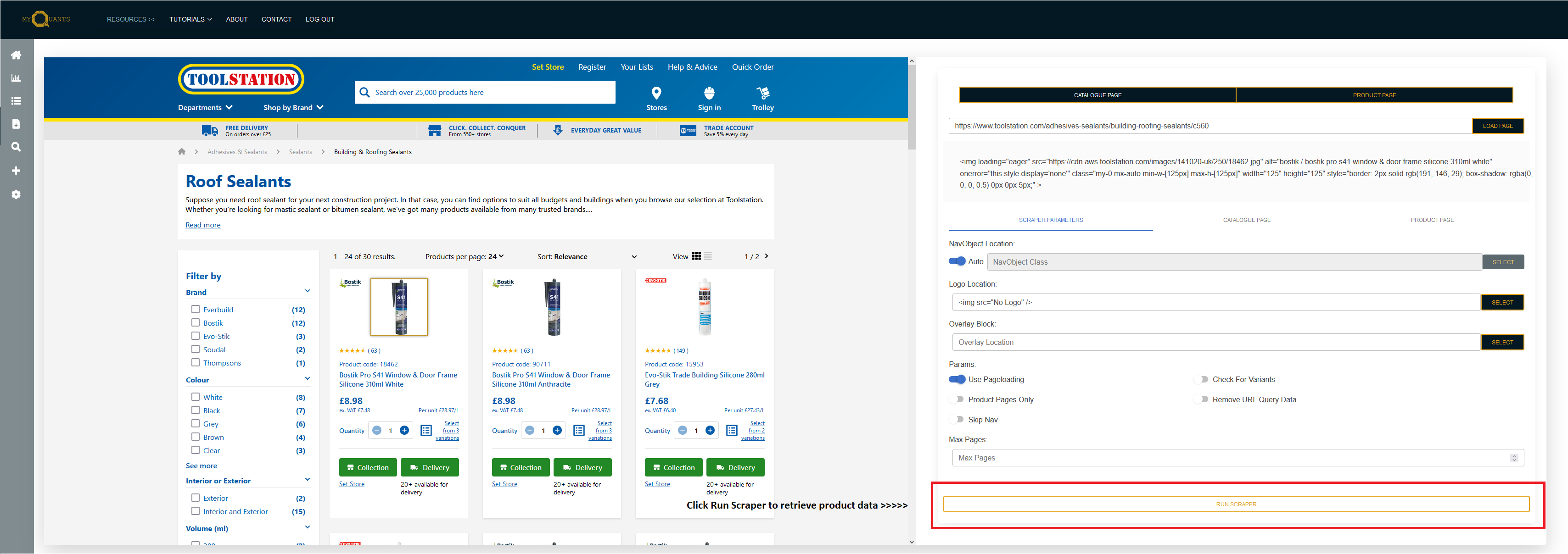
Once clicked, if you scroll down, you should be able to see the scraper status, product data from the page should be visible in the output.
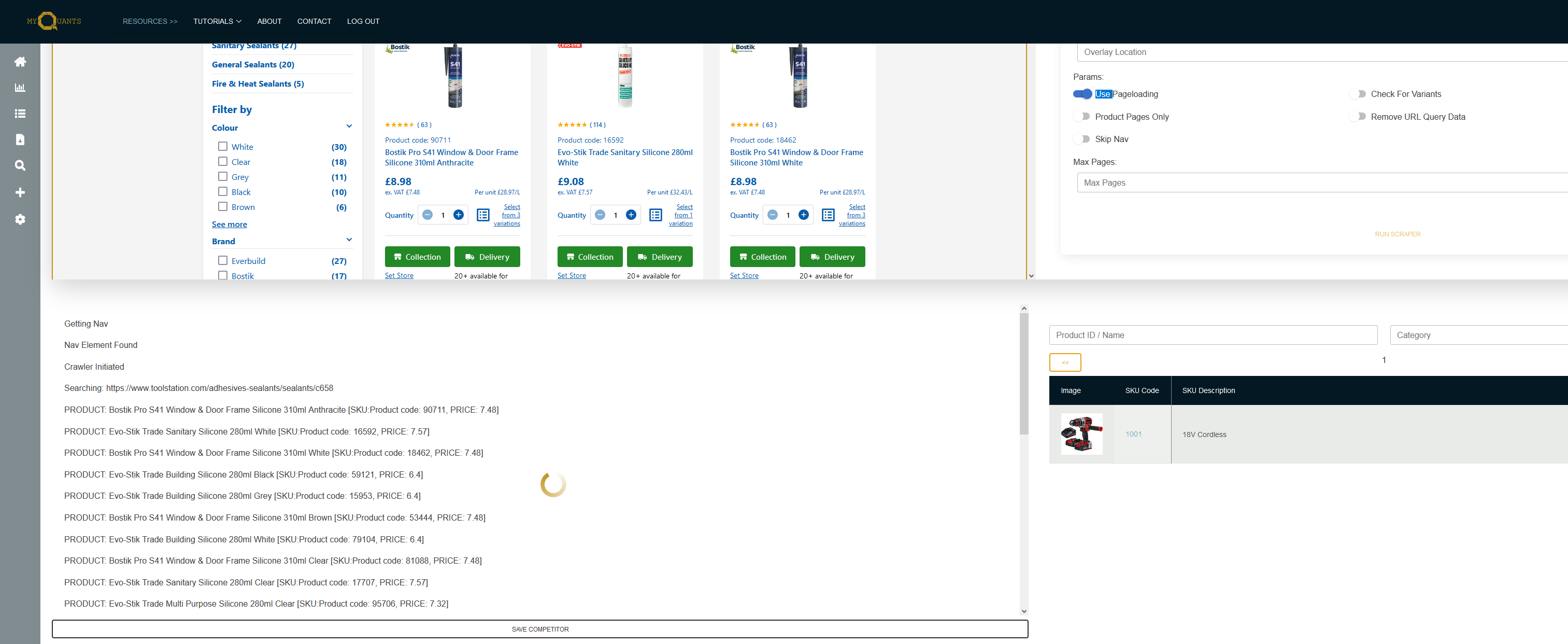
After the scraper has finished finding products, it will then display the found product data in the output box.
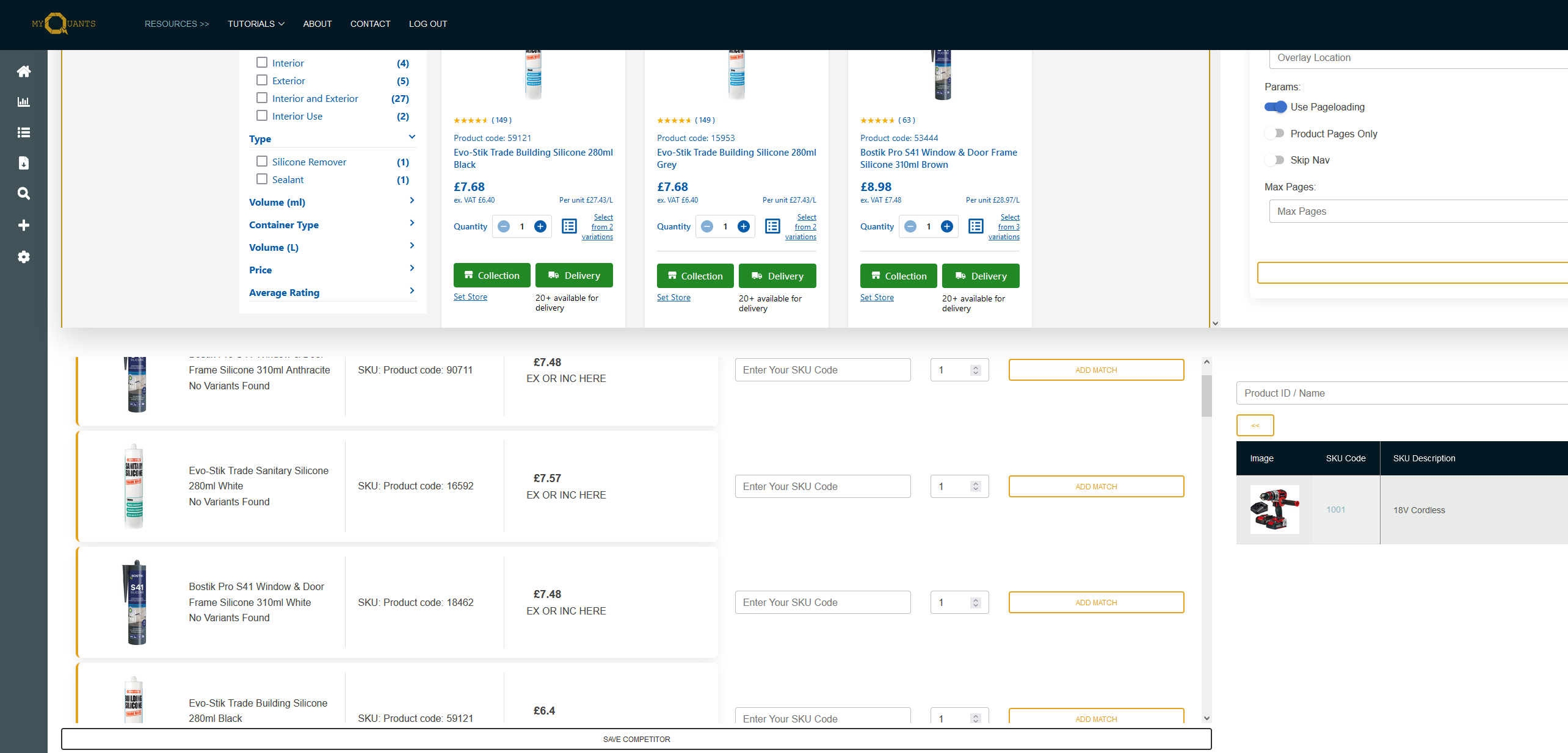
If the Data is Correct
If the output data is correct, you can make your product matches and then click "SAVE COMPETITOR". this will save this competitor to your account. You will now be able to search through these products, create matches, and view price changes as these products will now be tracked regularly by MyQuants.
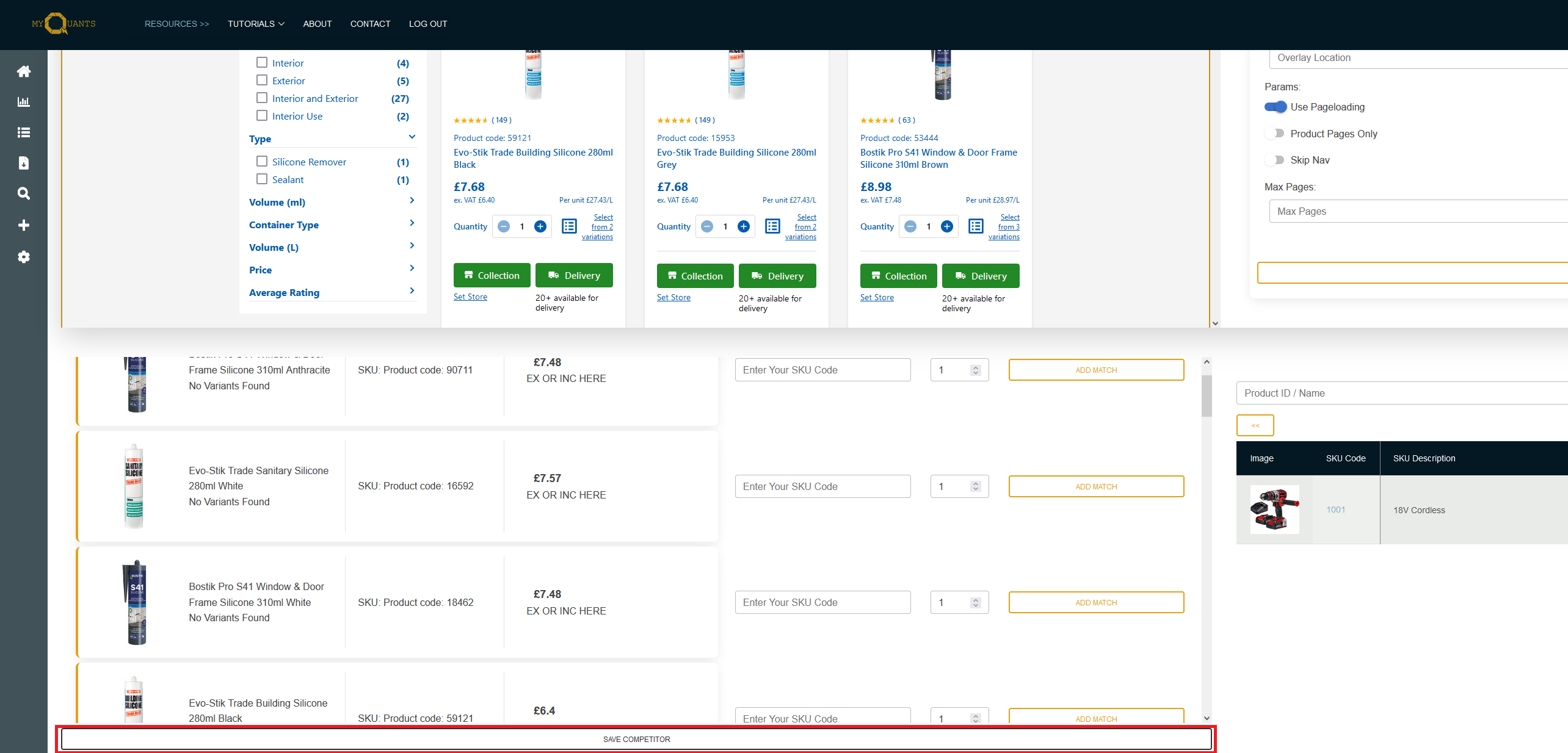
If the Data is Missing Elements
MyQuants tries its best, but some websites are build drastically differently from others. If the output isnt what you expected, or certain elements such as the SKU code or the correct price hasn't been picked up, you can adjust the scraper parameters to capture these elements more directly by scrolling back up to the parameters box.
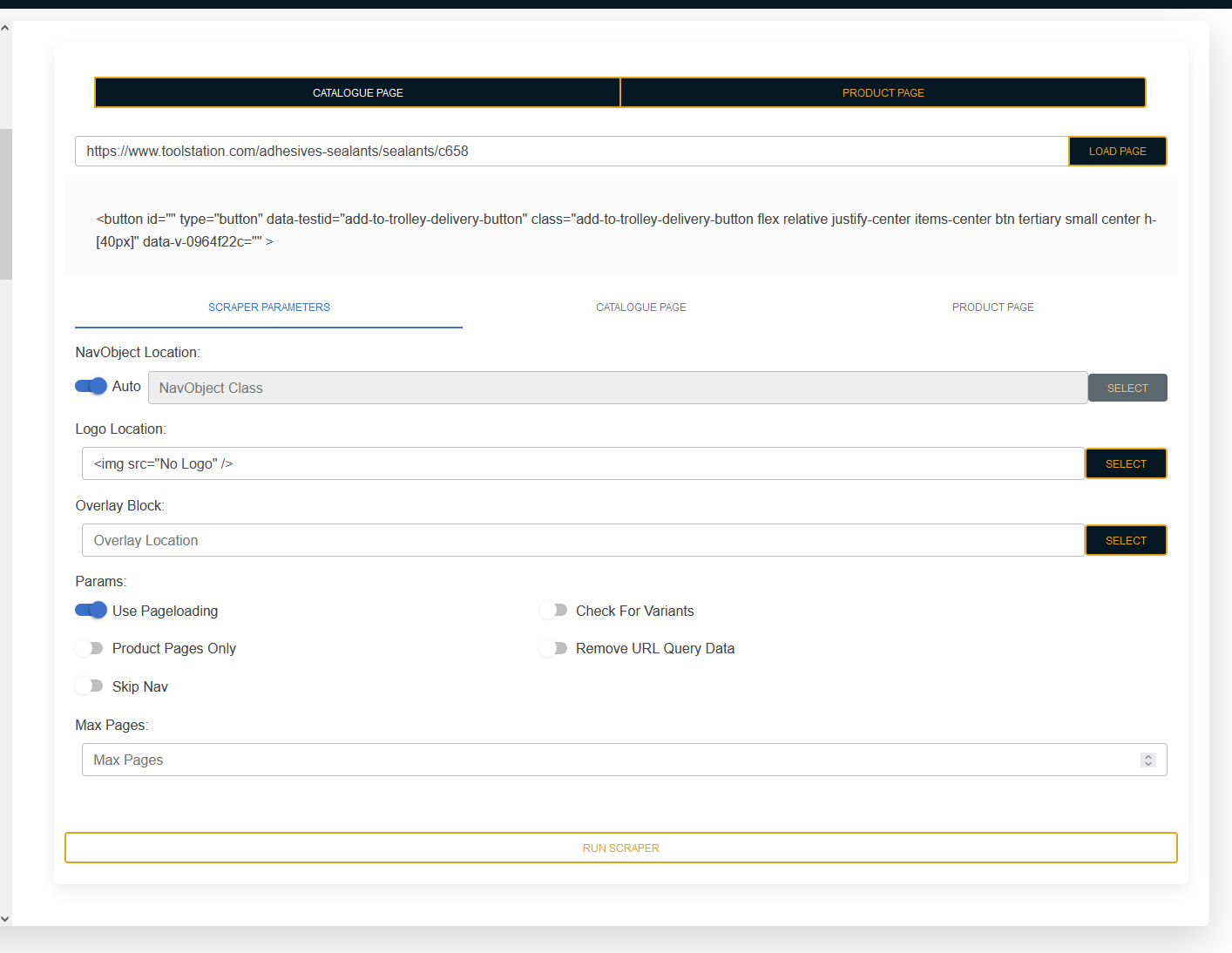
The parameters box contains a list of inputs that represent desired datapoints required for product tracking.
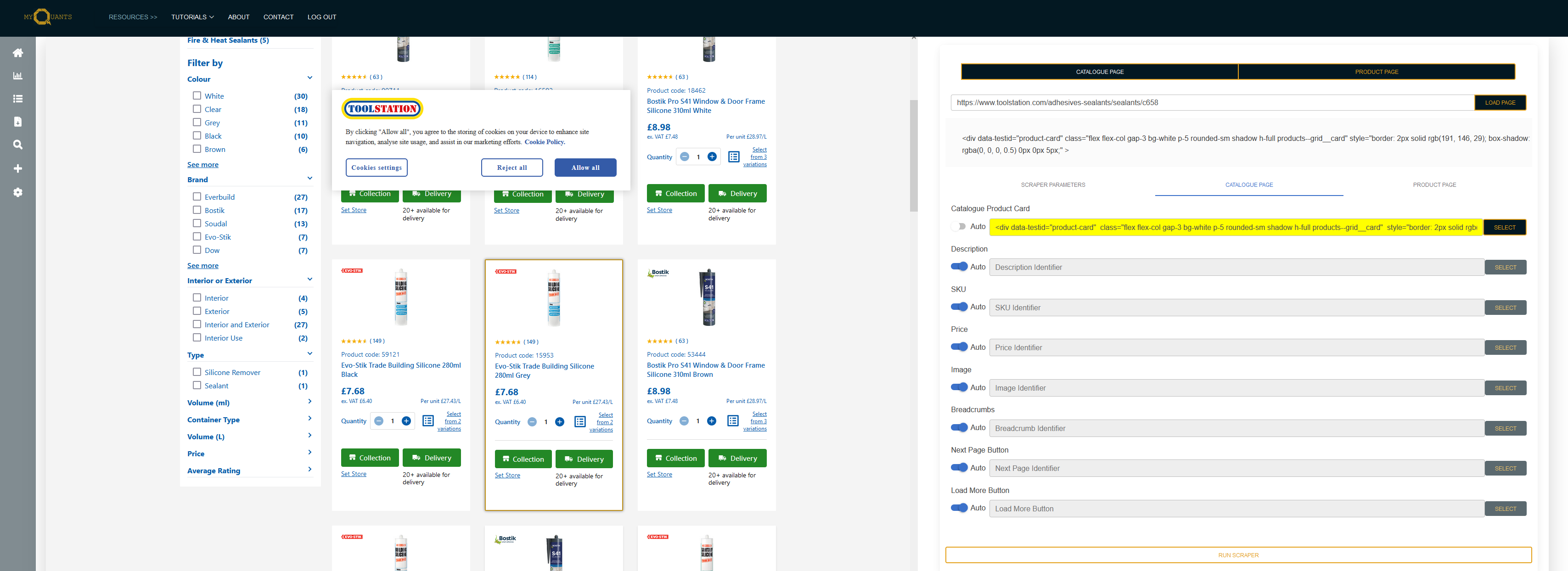 You can directly select elements on the page by turning off auto on the desired parameter.
Then you must click "SELECT" the input box should turn yellow.
You can directly select elements on the page by turning off auto on the desired parameter.
Then you must click "SELECT" the input box should turn yellow. To select reuqired elements Navigate to the preview section of the scraper and elements will be highlighted. You select by Left Clicking on the highlighted element.
- Ctrl + Left Mouse Button : This Selects the child element of the currently highlighted
- Ctrl + Right Mouse Button : This Selects the parent element of the currently highlighted
- Alt + Right Mouse Button : This Deletes the currently highlighted element
Parameters are broken up into 3 sections.
 Scraper Parameters: These are the parameters used by the scraper itself to load the page.
Scraper Parameters: These are the parameters used by the scraper itself to load the page.
- NavObject Location: This is the location of the nav bar, this needs to be highlighted as navbars may contain product data that can be wrongly picked up by the scraper.
- Logo Location: This is the logo image location on the page, this is only to provide to competitor logo to the competitor page.
- Overlay Block: If the website requires you to accept cookies or confirm age, then you input the HTML tag value of the 'accept' button here.
- Use Pageloading: This tells the scraper to load javascript elements, using this will slow scraping speed down but will allow you to see product data on more complex websites.
- Check Variants: Some websites have nested product variants, clicking this tells the scraper to investigate each page and find variants.
- Remove URL Query Data: Some pages use custom queries in the url which may cause errors. It is recommended to keep this off.
- Skip Nav: If the target website does not have a NavBar (such as Google Shopping), then select this option.
- Max Pages: MyQuants is capable of looking through pages inside catalogues, the default is to only look at the first page, but by putting in the desired number of pages you want to search into this box, MyQuants will search through all next pages until this limit is reached.
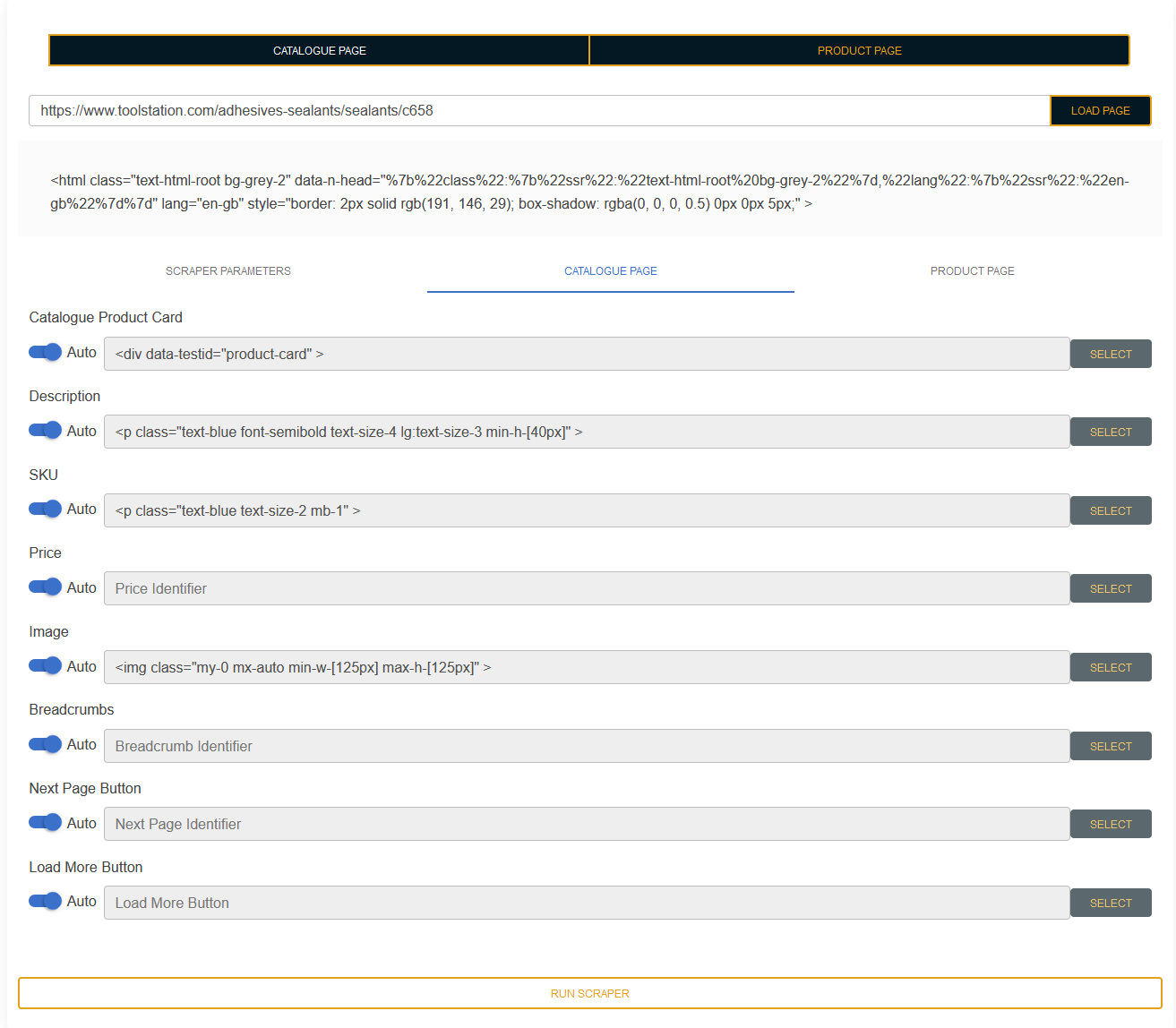 Catalogue Page: These are parameters specifically for scraping Catalogue pages.
Catalogue Page: These are parameters specifically for scraping Catalogue pages.
-
Catalogue Product Card: This is the product card used by the target website on their cataloge page. Example highlighted below

-
Description: This is the product description element. It must be contained within a product card.
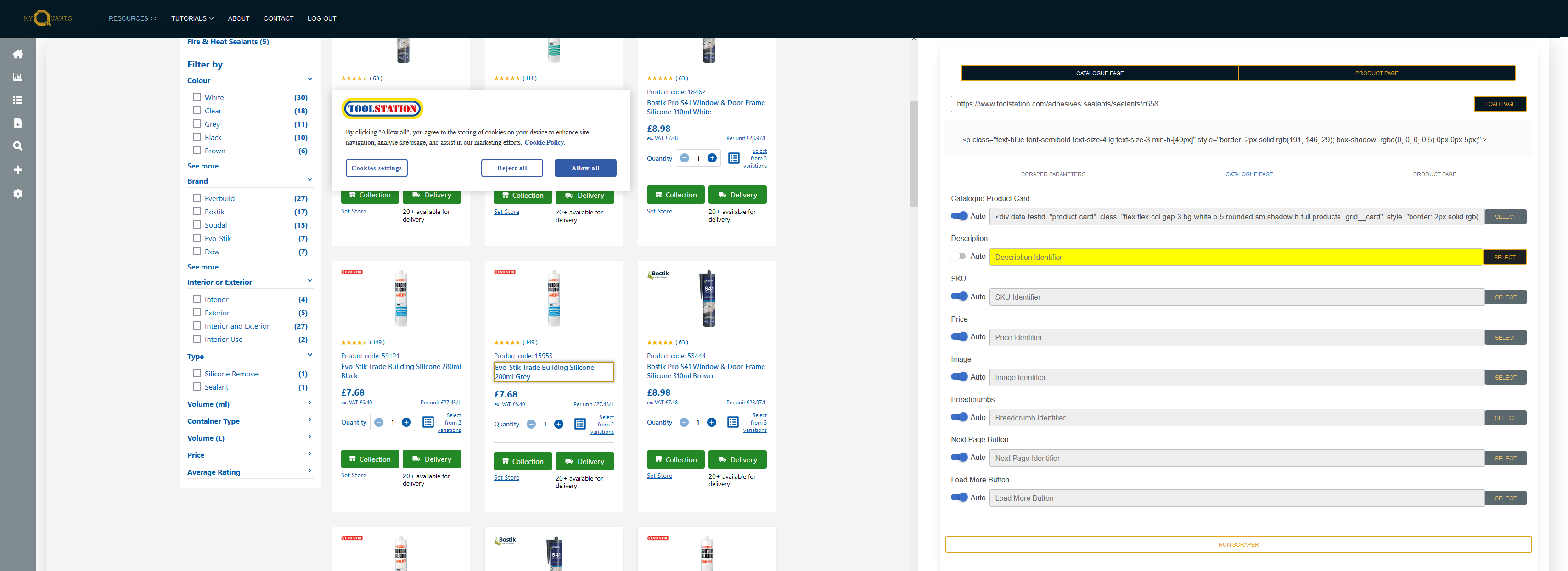
-
SKU: This is the product code (or SKU) element. It must be contained within a product card.
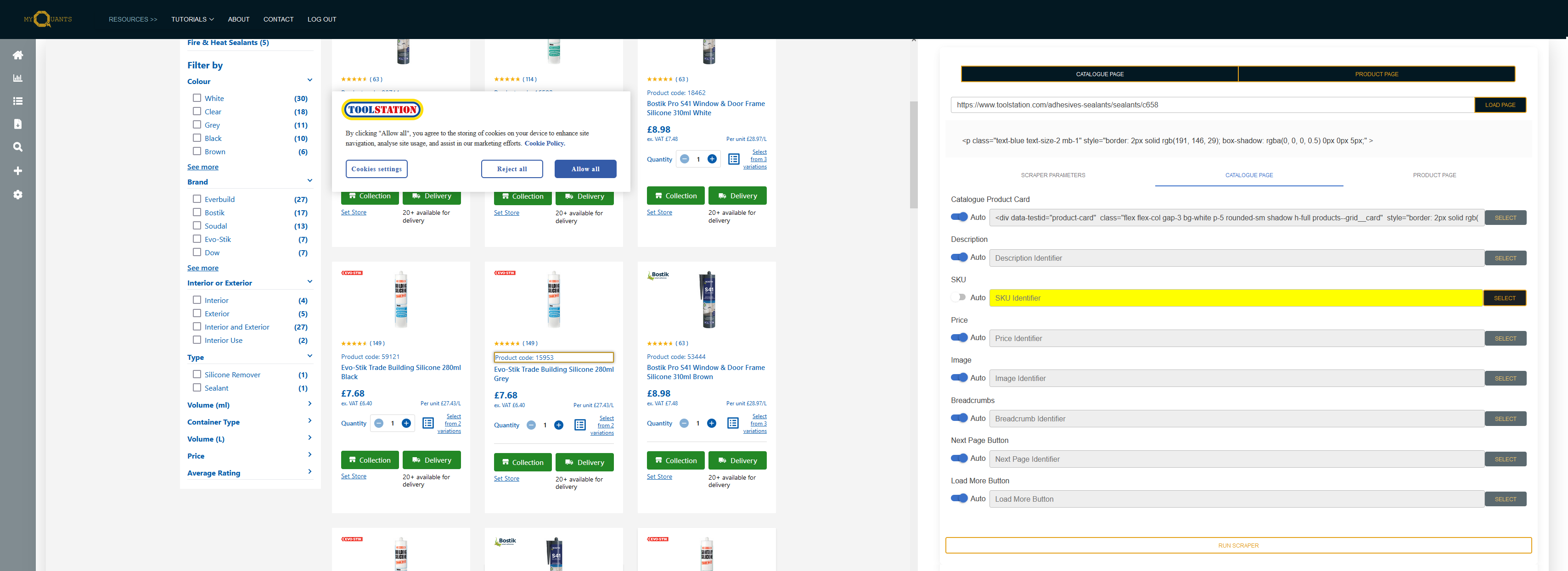
-
Price: This is the price element. It must be contained within a product card.
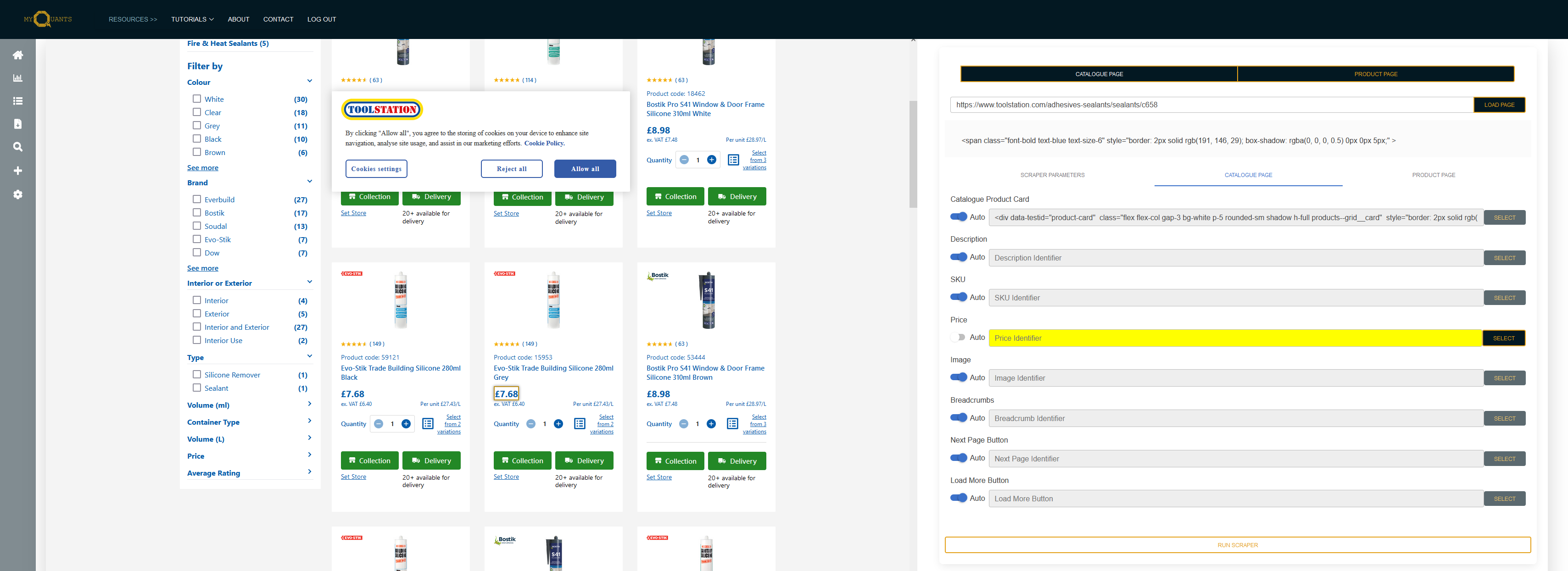
-
Image: This is the product card image element. It must be contained within a product card.

-
Breadcrumbs: This is the breadcrumb section of the page.
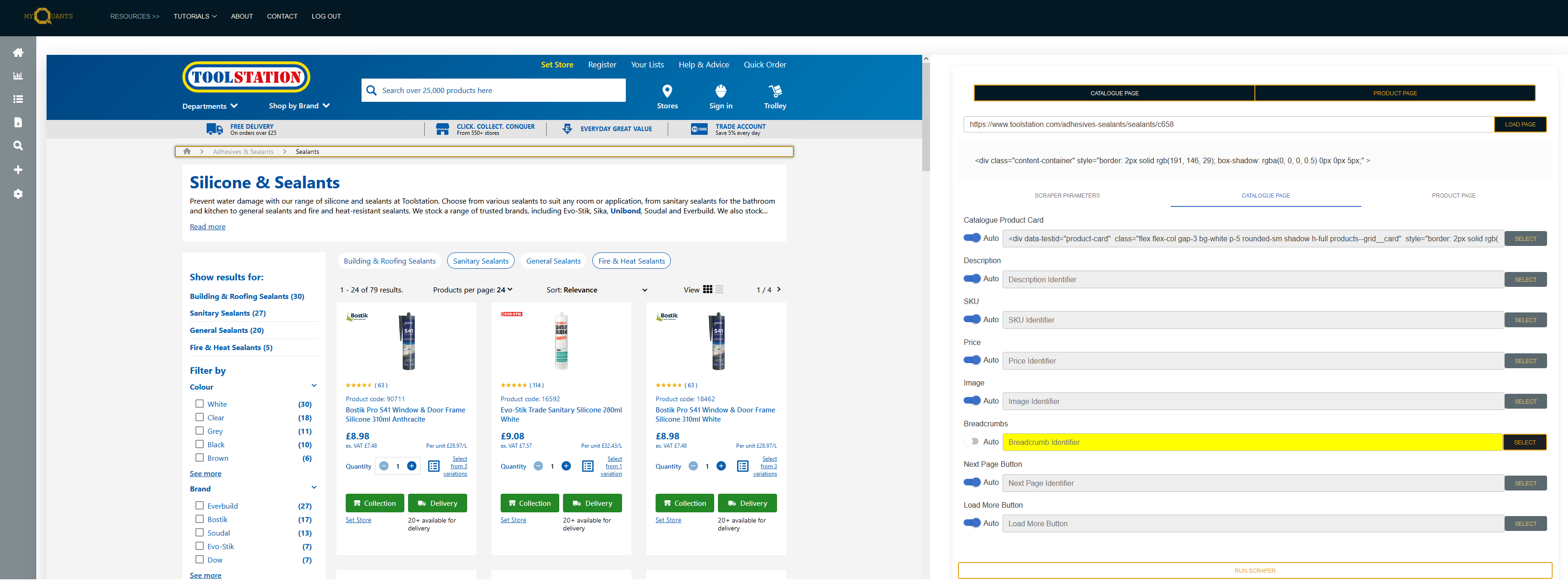
-
Next Page Button: This is the Next Page button element, it must be a clickable element (such as a (button) or (a) link )
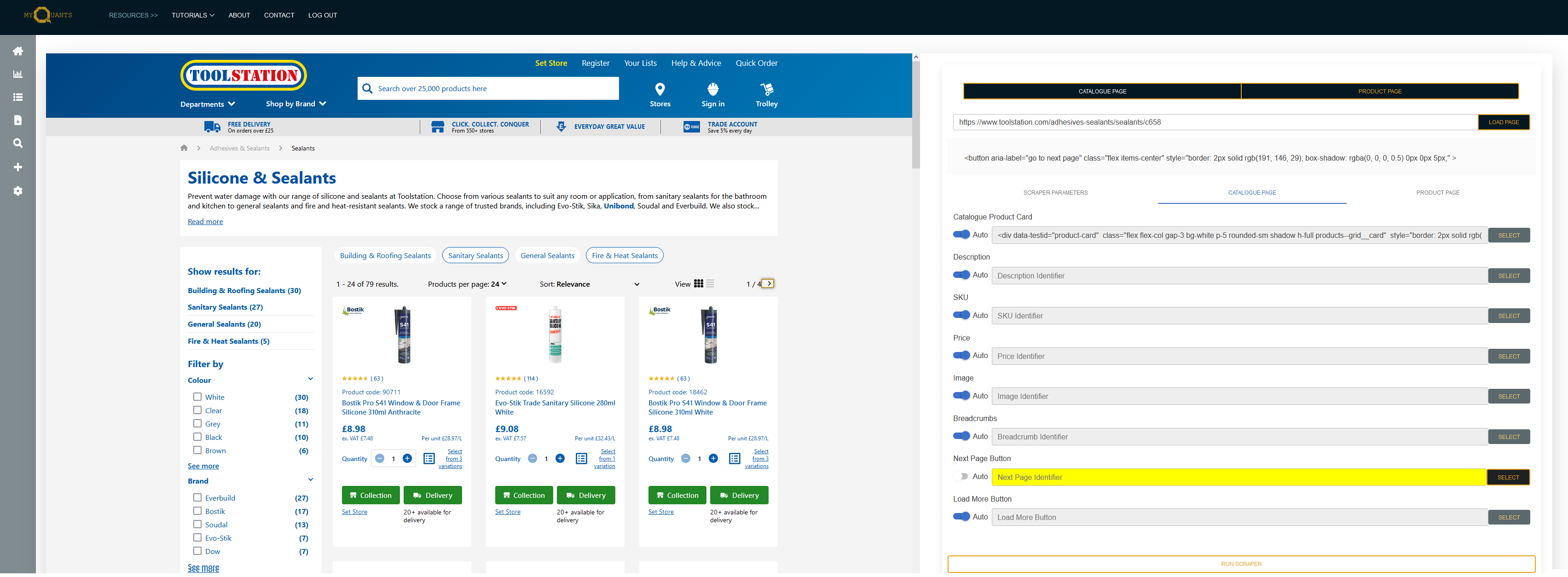
- Load More: Some pages do not use a Next Page button, they use a Load More button. This is the element that the scraper will click to load more page elements. Keep in mind that you will be limited to 300 elements for the load more event.
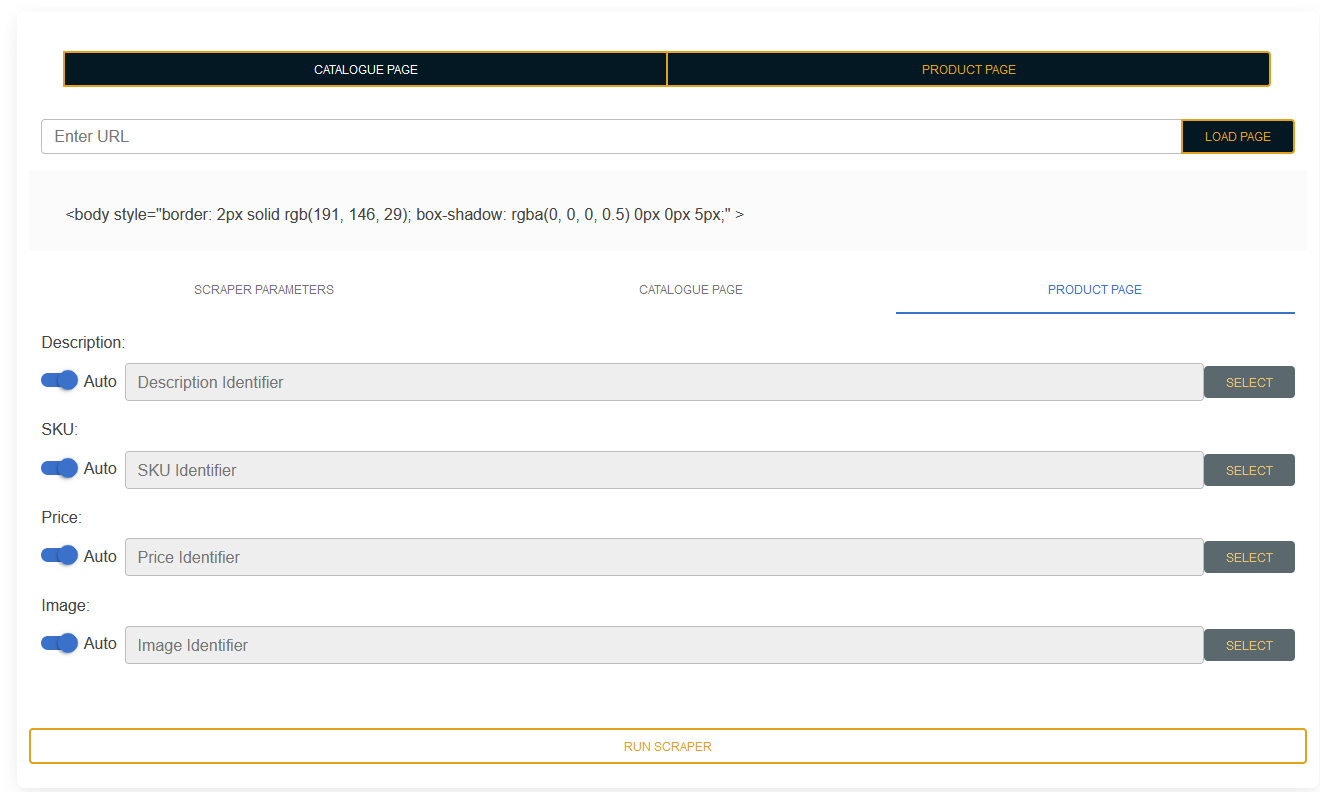
Adding a Product Page
Scraping Catalogue pages runs the risk of a specifically matched product not being picked up by the scraper. So to ensure more exact tracking, you can select "PRODUCT PAGE" on the MyQuants scraper, paste your Product page URL and click "LOAD PAGE"
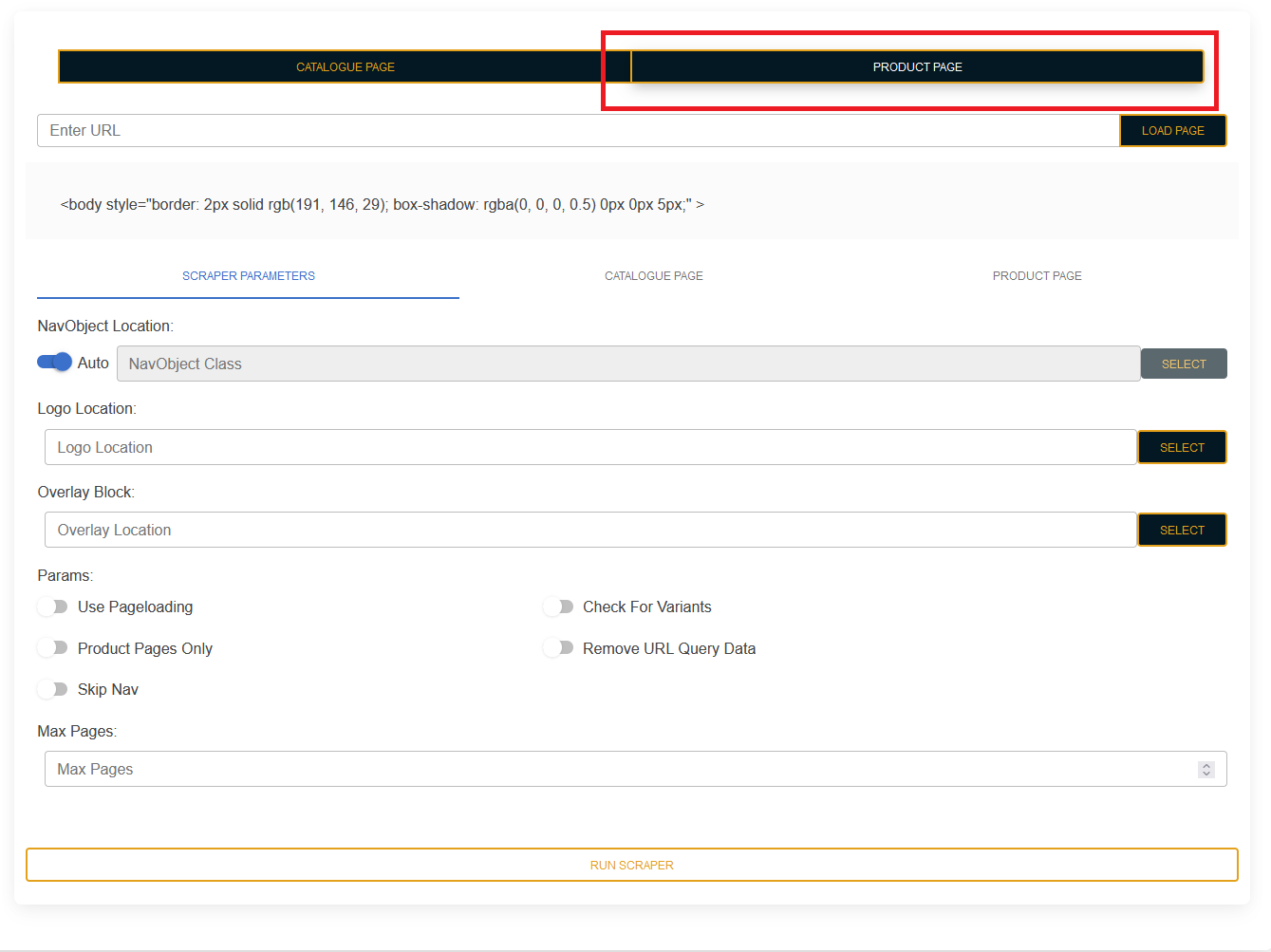
Once the page has loaded you can follow the same steps as if scraping a Catalogue page.
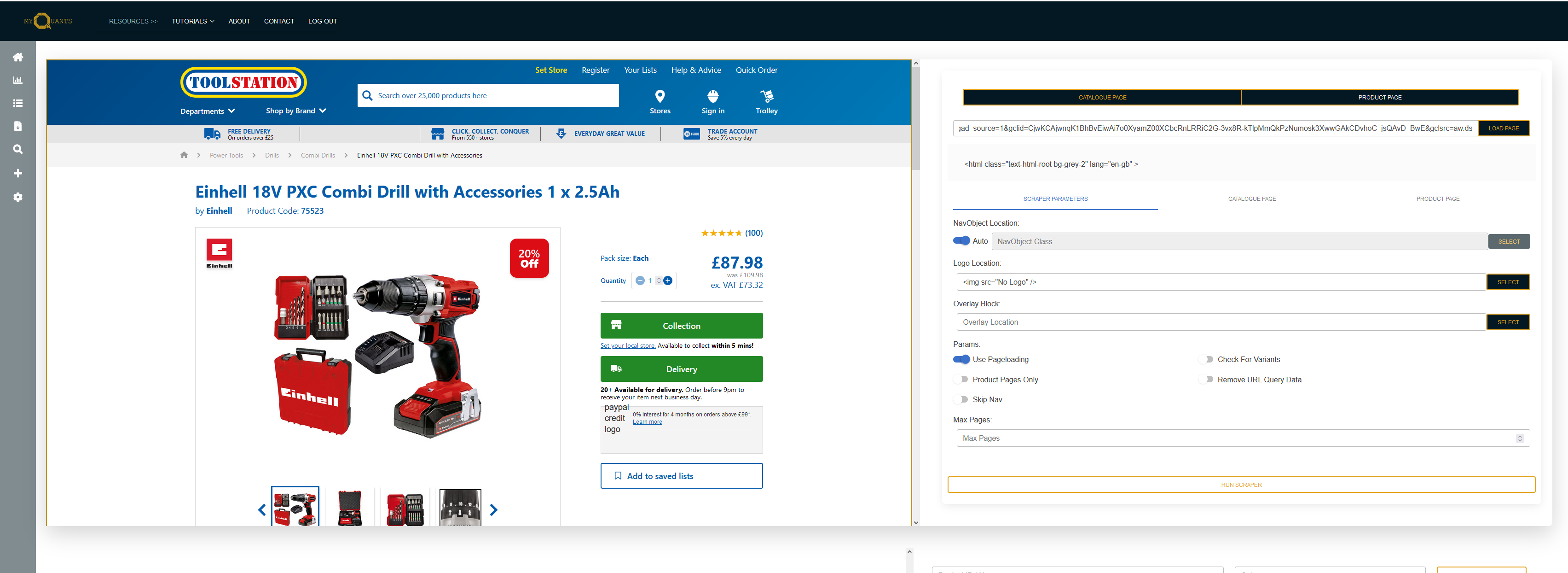
Firstly, click "RUN SCRAPE" to check if MyQuants can automatically identify elements.
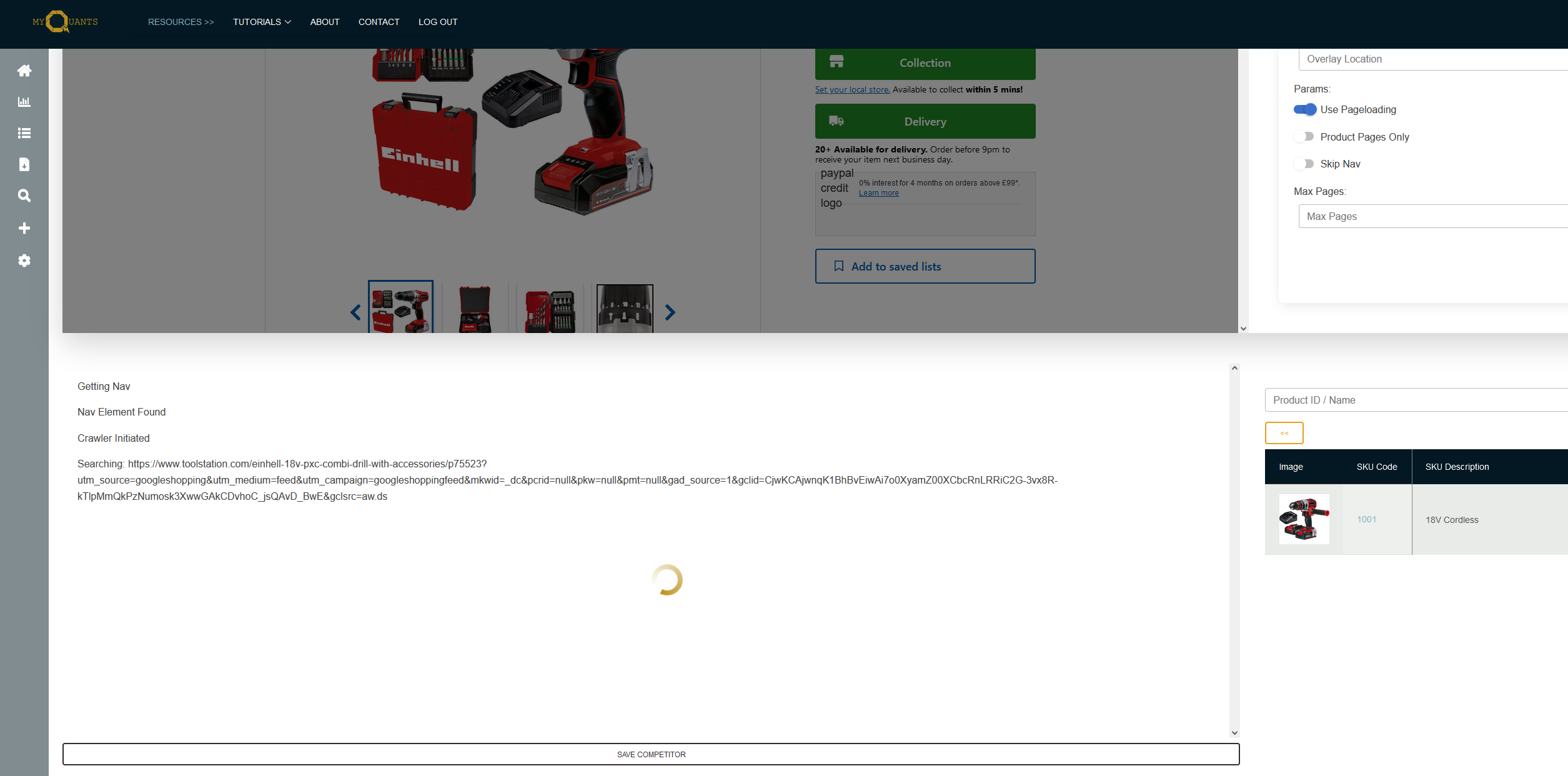
In this case, the scraper has not picked up all the correct elements, for example, the SKU is missing and the price is incorrect.
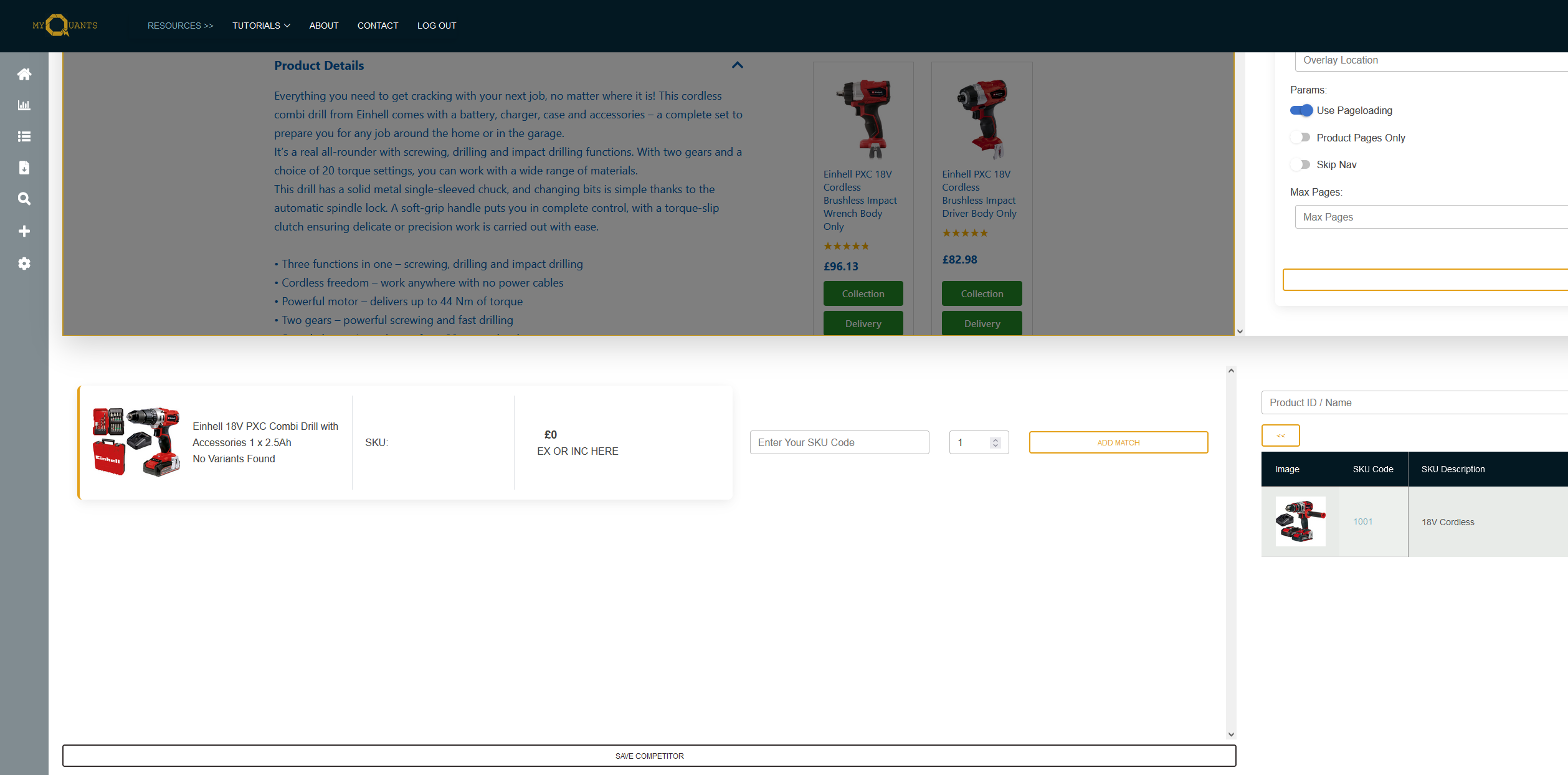
We move back up to the Parameters box and select "PRODUCT PAGE"
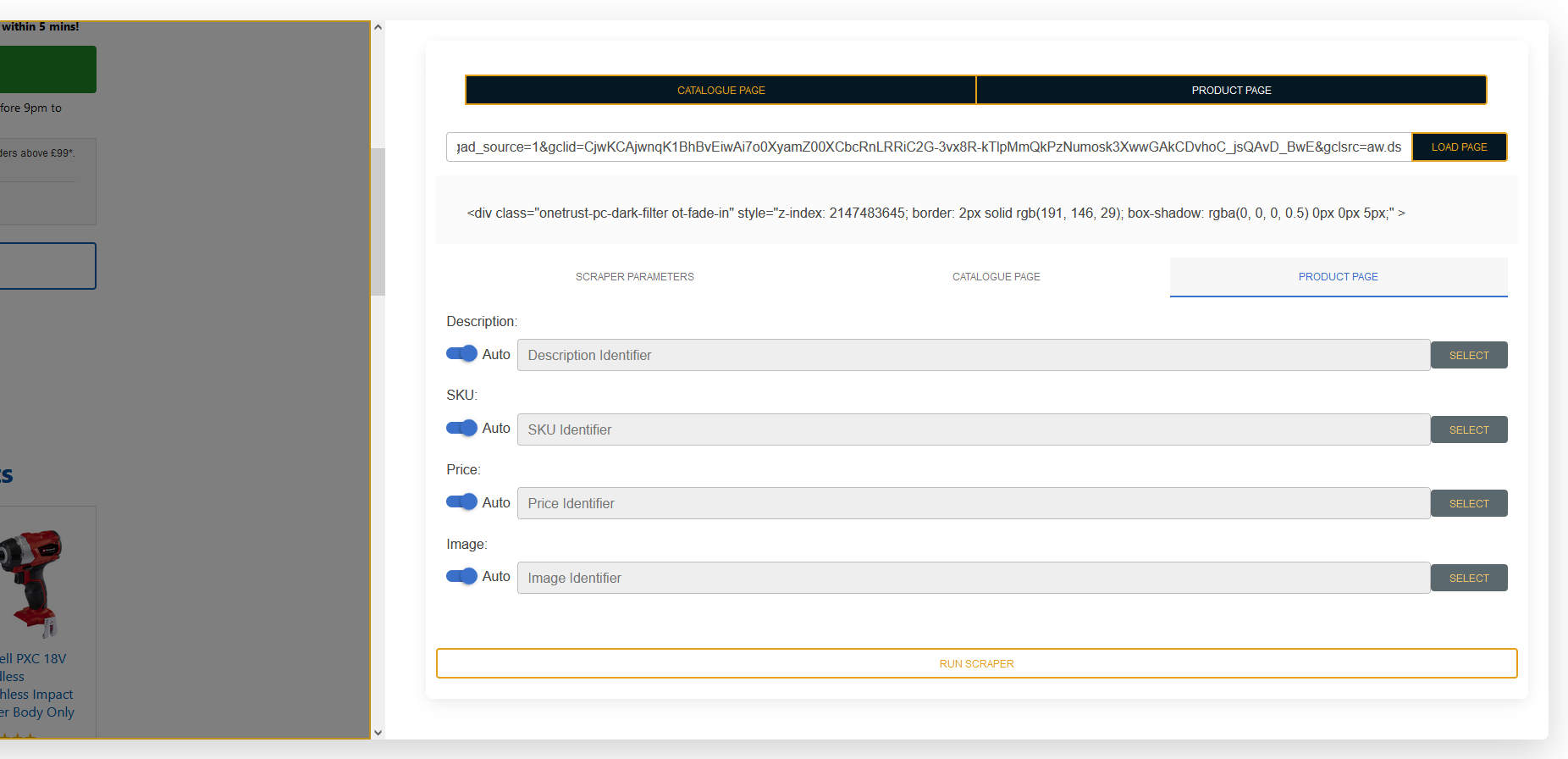 Product Page: These are parameters specifically for scraping Catalogue pages.
Product Page: These are parameters specifically for scraping Catalogue pages.
- Description: This is the product description element. It must be contained within a product card.
- SKU: This is the product code (or SKU) element. It must be contained within a product card.
- Price: This is the price element. It must be contained within a product card.
- Image: This is the product card image element. It must be contained within a product card.
We are missing both the SKU and the Price, so first we select the SKU by toggling the auto field, then clicking the select button (highlighting the SKU input), then navigating to the Preview section and clicking on the Product SKU code.

We do the same for the Price.
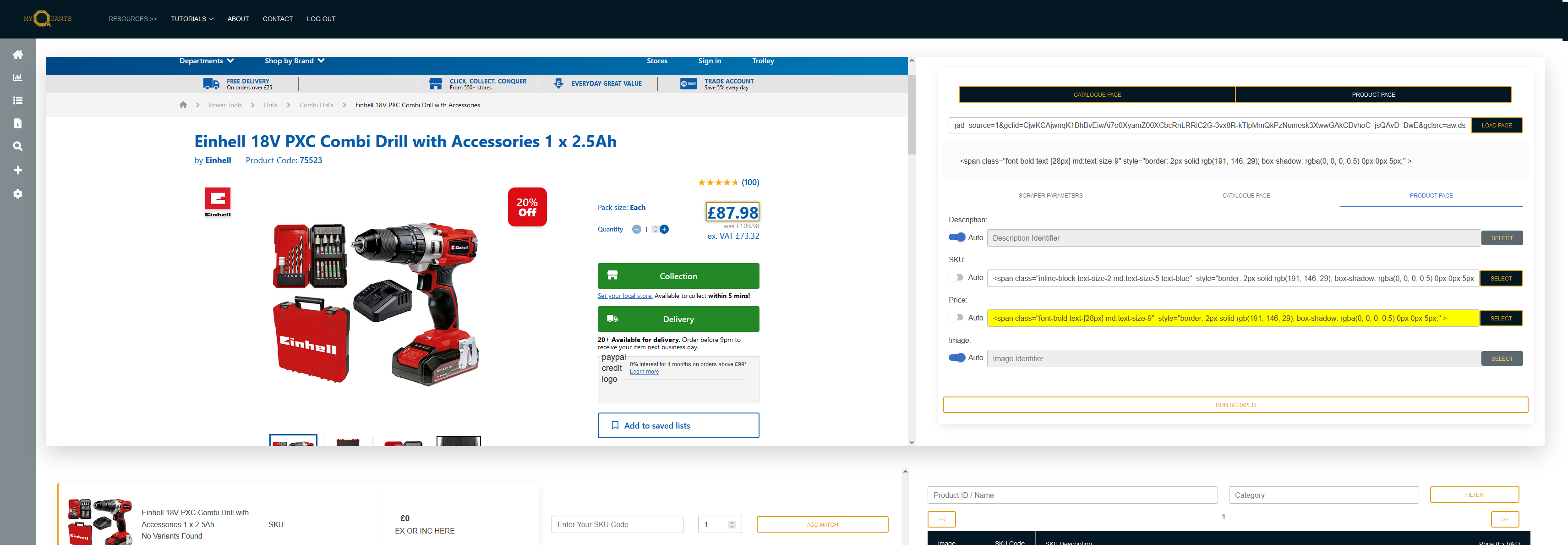
We then click "RUN SCRAPE" again

Now we can confirm the scraper is picking up the correct data.
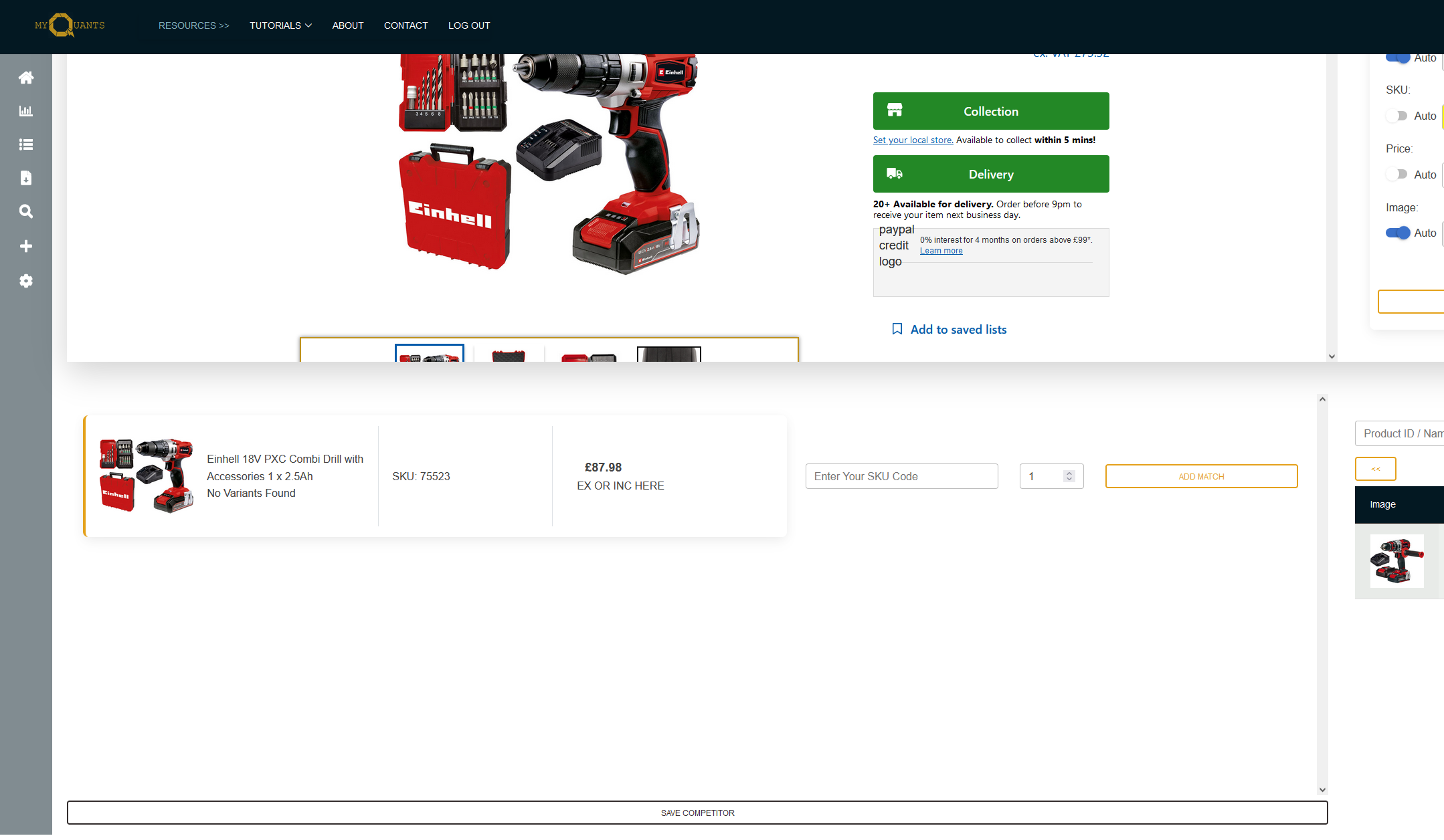
Creating a Match
Matches are connections between a competitors product and yours, by creating a match, you can effectively analyse your market position.
The product scraped above happens to match the product we added in the adding a product tutorial. Therefore we can create a match.
The simplest way to do this is to find our product in the product section of the scraper, located below.

Take the product code from here, and type it into the SKU code input of the create match section.

Then click "ADD MATCH", this will create a link between the two products that will be highlighted in MyQuants.

Once matched, you can click "SAVE COMPETITOR" and this product page will be added to your account data for future use and regular tracking.
Simplified Webscraping
See what your competitors are doing with MyQuants, the simple web scraping tool that removes all the fuss and gives you the tools you need to keep up and overtake the competition.
Get Now